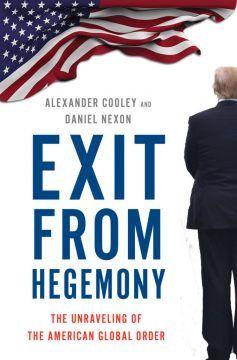 Dan Nexon over at the book’s website:
Dan Nexon over at the book’s website:
Many discussions about the end of “liberal international order” play out in extremely stylized (one might even say “crude”) terms. Some treat liberal ordering as an all-or-nothing deal, in which the only alternatives are a “rules-based order” or realpolitik, unconstrained great-power conflict. Those who treat American leadership as essential to international liberal order sometimes adopt this rhetoric—even if some of the same analysts elsewhere stress that other liberal democracies may be able to substitute for the United States.
Liberal order is not all or nothing; we do not face a future that either takes the form of “rules-based order” or “the law of the jungle.” There have been many different forms of liberal ordering over the past two hundred years.
In Exit from Hegemony we distinguish between three major components of liberal order.
Political liberal governance: “The architecture of international orders is politically liberal to the extent that it establishes the responsibility for governments to protect some minimal set of individual rights for their citizens, with more liberal orders favoring developed liberal-democratic governance among their members.”
Economic liberalism, which “refers to the belief in, and commitment to, encouraging open economic exchange and flows among states.”
Liberal intergovernmentalism “concerns the means, or form, of international order.” It “favors… multilateral treaties and agreements, international organizations, and institutions that make rules and norms; monitor compliance with those rules and norms; resolve disputes; and provide for public, private, and club goods.” It “also manifests in bilateral agreements and institutions that reflect principles of juridical sovereign equality even when concluded by states that are significantly unequal in their power relations.”
In both principle and practice, there are lots of different kinds of liberalism within these baskets and many different overall configurations of the three components.
More here.
